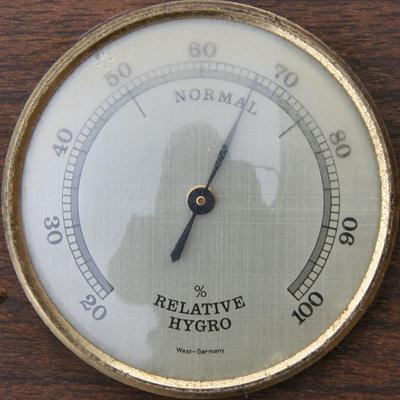PDF chapter test TRY NOW
Pleasant weather depends on various factors, and one such important factor is humidity. If the humidity is high, then we feel sweaty.
Humidity is the amount of water vapour present in the air. It may range from\(\ 0-5\ percent\ \)by volume in the atmosphere. The higher the temperature, the higher the water vapour holding capacity of air. If the amount of water vapour is high in the air, the humidity will be high. The higher the humidity, the wetter it feels outside.
Both too high or too low humidity can be dangerous. For instance, high humidity coupled with hot temperatures can be a health risk, especially for the very young and the very old. It also alters the stability of different objects, such as buildings and electrical applications.
So, climatically it is an important constituent of the atmosphere. The level of humidity decreases towards poles from the equator. Based on the type of measurement, humidity is expressed in different ways.
Specific humidity
Specific humidity is the mass of water vapour in a unit mass of moist air.
It is expressed in grams of vapour per kilogram of air.
Specific humidity= the water vapour content of the mixture /the total air content on a mass basis
Absolute Humidity
Simply stating, Absolute humidity is the density of water vapour in the air. In other words, it is the mass or weight of water vapour present per unit volume of air.
Unit: kg/m³
Unit: kg/m³
Relative Humidity
The relative humidity is the ratio of the amount of water vapour actually present in the air to the maximum capacity of air at the same temperature.
Unit: No (expressed as a percentage)
Unit: No (expressed as a percentage)
As discussed earlier, the capacity of water vapour holding increases with an increase in temperature. Therefore, comparatively warmer air holds more water vapour than cold air.
On reaching 100% relative humidity, the air gets saturated. This point is called a dew-point. On further cooling, the water vapour will condense, and it rains. This saturation point is called a dew- point.
On reaching 100% relative humidity, the air gets saturated. This point is called a dew-point. On further cooling, the water vapour will condense, and it rains. This saturation point is called a dew- point.
Measurement of Humidity
The hygrometer is used to measure the humidity (which comprises wet and dry bulb-plate side by side in the Stevenson screen).

Hygrometer
With the increase in altitude, the density of air decreases; this, in turn, decreases the oxygen available for breathing. This is the reason why at very high altitudes, people can become sick and even die due to scarcity of oxygen.
Mountaineers use bottled oxygen when they ascend very high peaks. They also take time to get accustomed to the altitude as the quick movement from high pressure to low pressure may cause decompression sickness. In order to avoid passengers getting sick, aircraft create artificial pressure inside the cabin that makes the passengers remain comfortable while flying.
